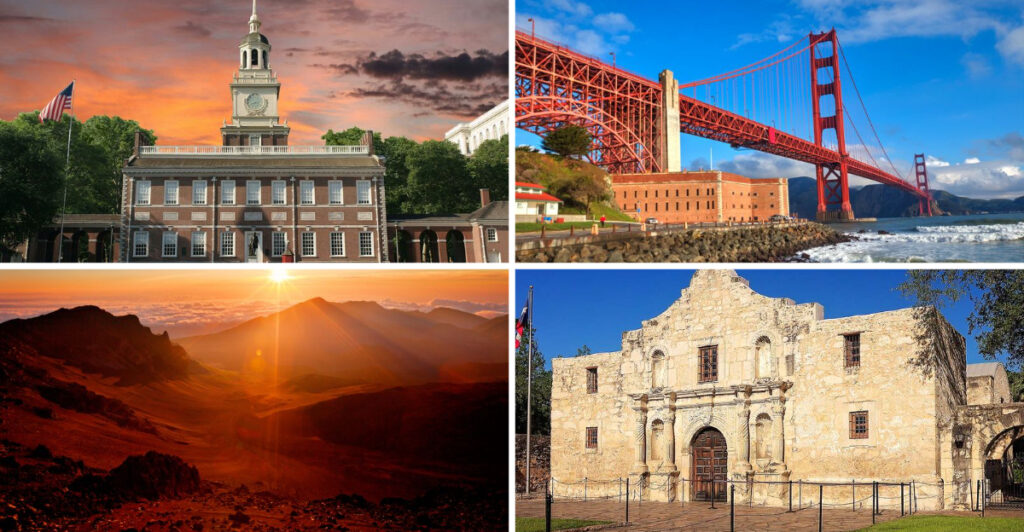Embark on a journey through time by exploring these 50 captivating sites that reveal the rich history of the United States. From the founding moments on the East Coast to the pioneering spirit of the West, each location offers a unique glimpse into the past.
1. Independence Hall
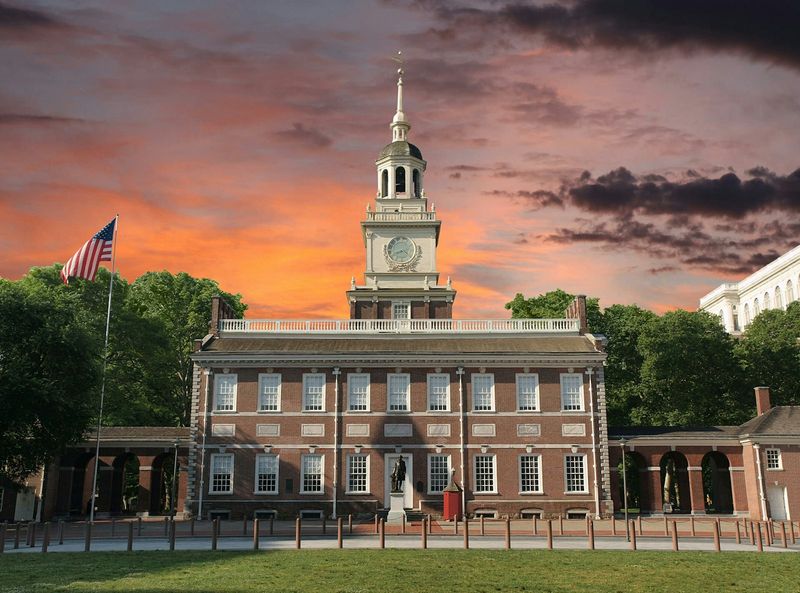
Independence Hall in Philadelphia, where the Declaration of Independence was signed, is a cornerstone of American history. The grandeur of its Georgian architecture, combined with its role in shaping the nation, makes it a must-visit. Walking through the corridors, visitors can almost hear the echoes of the founding fathers debating liberty.
A UNESCO World Heritage Site, its historical significance is unmatched. Every corner tells a story of bravery and vision. It’s not just a building; it’s where a nation was born.
Did you know? The Liberty Bell, an iconic symbol of freedom, once hung here.
2. Gettysburg National Military Park
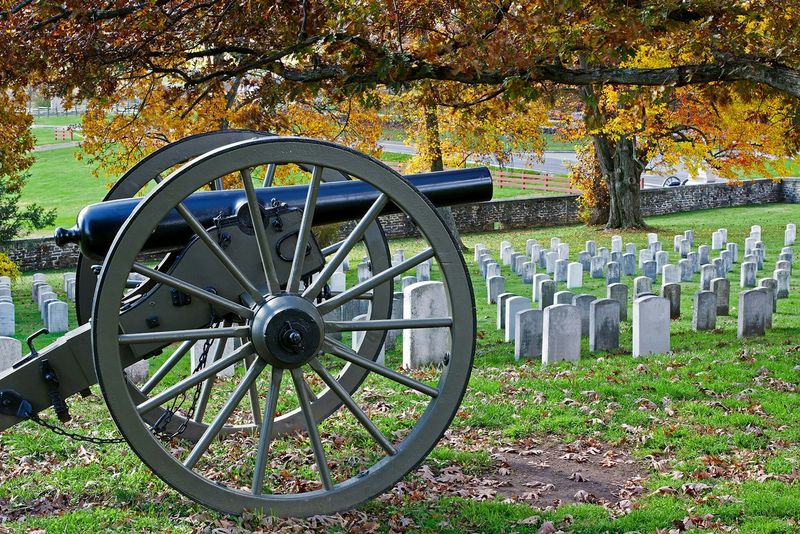
Gettysburg National Military Park in Pennsylvania marks the turning point of the Civil War. The landscape, dotted with solemn monuments, speaks volumes of bravery and sacrifice. Walking the battlefield, one can almost hear the gunfire and the cries of soldiers.
The Visitor Center offers insightful exhibits, providing context to the events of 1863. It’s a place of reflection and respect for those who fought.
Fun Fact: President Lincoln delivered his famous Gettysburg Address here, redefining the purpose of the war and the ideals of the nation.
3. Freedom Trail
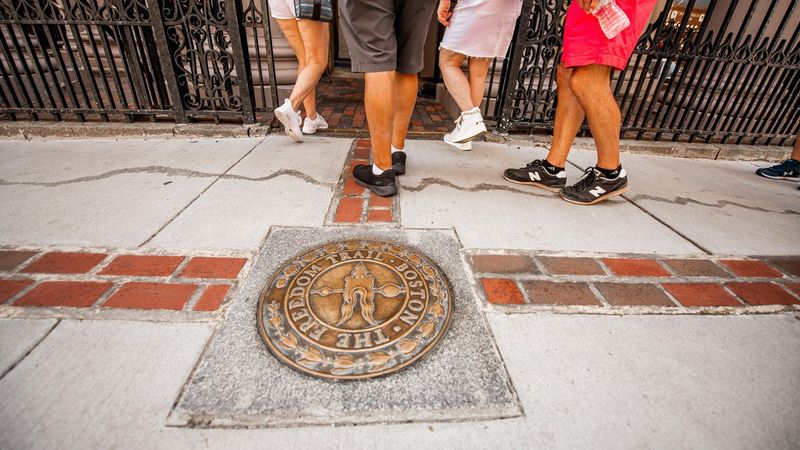
Boston’s Freedom Trail offers a vibrant walk through America’s revolutionary history. This 2.5-mile trail leads you to 16 significant sites, including Paul Revere’s House and the Boston Massacre site. Each step on the red-brick path resonates with tales of revolt and liberty.
Guided tours bring stories to life, making history tangible and engaging. The trail is not just educational but also a delightful journey through Boston’s picturesque streets.
Quirky Detail: The trail’s markers are made of red bricks, symbolizing the bloodshed for independence.
4. Ellis Island
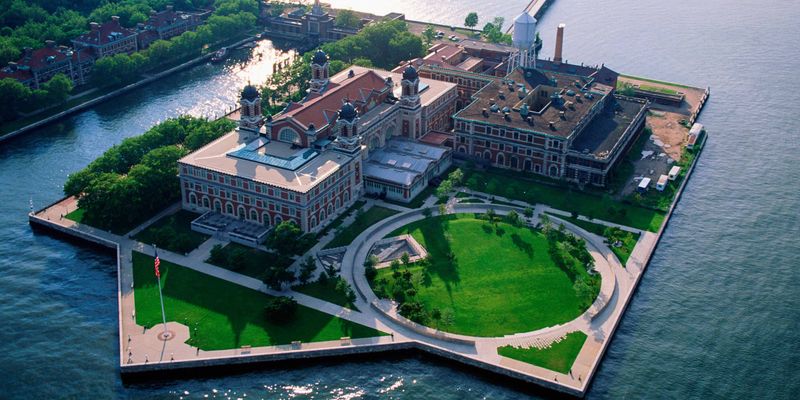
Ellis Island in New York Harbor stands as a testament to the immigrant experience. Over 12 million immigrants entered America through its halls, pursuing dreams of a better life. The Ellis Island National Museum of Immigration chronicles these journeys, offering poignant stories of hope and hardship.
Visitors can trace ancestry and imagine the fervor of arriving at a new world.
Interesting Tidbit: The island was originally much smaller. It was expanded using landfill, which included soil from the New York City subway excavation.
5. Jamestown Settlement

Jamestown Settlement in Virginia marks the first permanent English colony in America. It offers a fascinating glimpse into 17th-century colonial life. The site features living-history museums with costumed interpreters reenacting daily activities.
Visitors can explore replicas of the ships that brought the settlers, original fort structures, and Powhatan Indian Village.
Did You Know? Pocahontas, the daughter of Powhatan chief, played a significant role in Jamestown’s history, fostering peace between settlers and native tribes.
6. Colonial Williamsburg
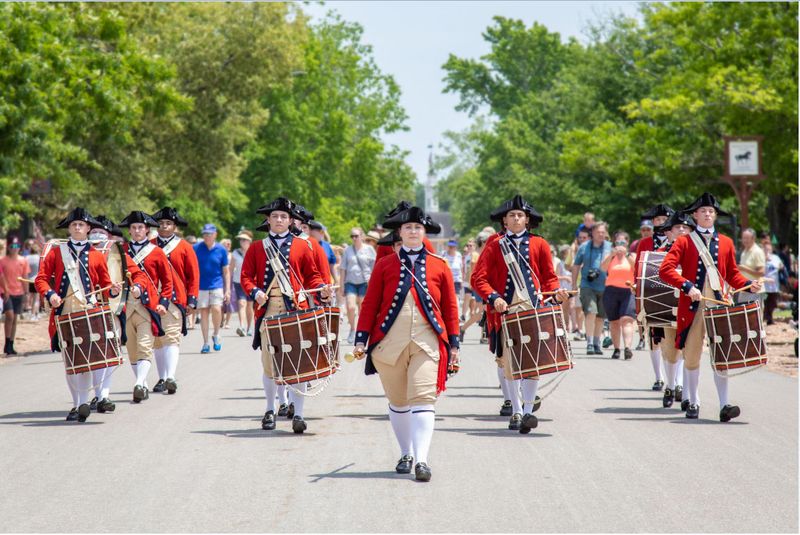
Step back in time to Colonial Williamsburg, a living-history museum in Virginia. Here, you’ll find meticulously restored buildings, costumed interpreters, and engaging exhibits that bring the 18th century to life. Walk along cobblestone streets, watch traditional craftspeople at work, and experience the essence of early American life. The Governor’s Palace, with its grand architecture, stands as a testament to colonial history. Whether it’s watching a blacksmith forge iron or listening to a public debate, Williamsburg offers an immersive journey through America’s past.
7. Alamo Mission
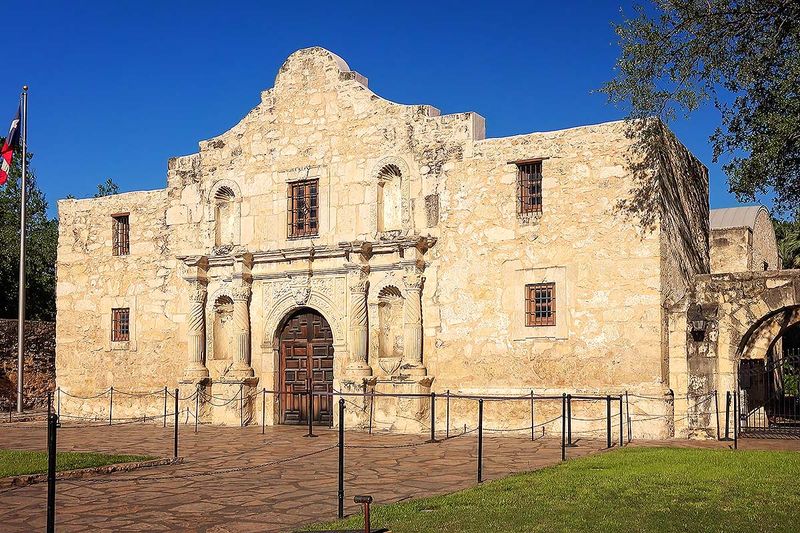
The Alamo, located in the heart of San Antonio, Texas, is a symbol of Texan independence. This historic mission was the site of a pivotal battle in 1836, where a small group of Texan defenders, including Davy Crockett, held out against a larger Mexican force. The Alamo’s iconic facade and peaceful courtyard are reminders of the courage and sacrifice of those who fought here. Today, visitors can explore the chapel, museum, and surrounding gardens, gaining insight into the history and legacy of this legendary site.
8. Monticello
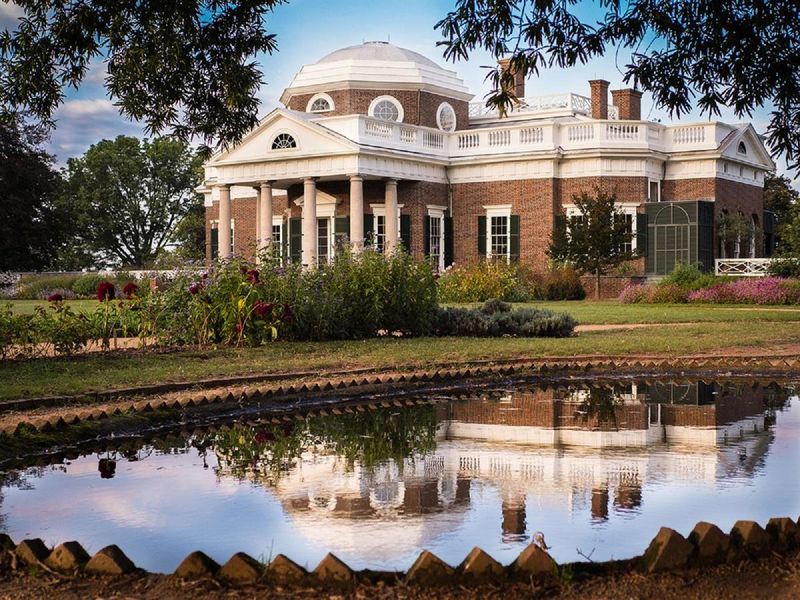
Monticello, the picturesque estate of Thomas Jefferson, offers a glimpse into the mind of one of America’s Founding Fathers. Nestled in the hills of Virginia, the neoclassical mansion is renowned for its architectural brilliance and expansive gardens. Visitors can explore the house, discovering Jefferson’s ingenious inventions and personal artifacts. The estate also provides insight into the lives of the enslaved people who lived and worked there. Monticello stands as a testament to the complexities of American history and Jefferson’s enduring legacy.
9. Wounded Knee
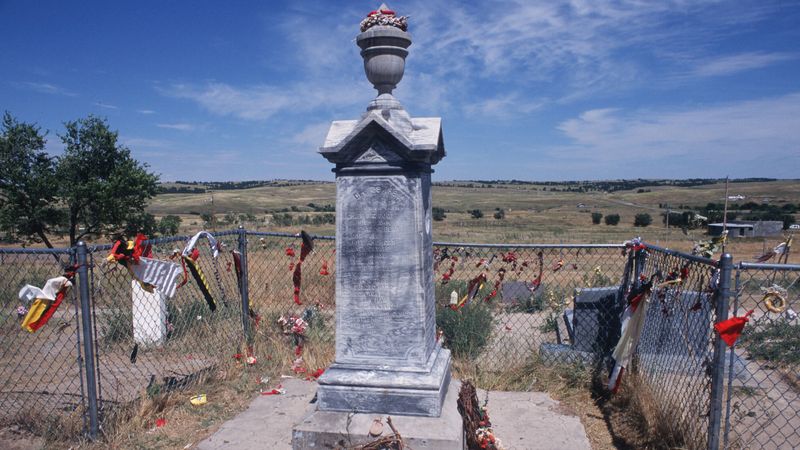
Wounded Knee, a poignant location in South Dakota, serves as a reminder of the tragic events that unfolded in 1890. A massacre of Lakota Sioux by U.S. troops marked the end of Native American resistance in the Plains. The site is now a memorial, honoring the lives lost and the resilience of indigenous peoples. Visitors can reflect on the sorrowful history while appreciating the beauty of the surrounding landscape. Wounded Knee is a place of remembrance and reflection, highlighting the struggles and strength of Native American communities.
10. Fort Sumter National Monument

The first shots of the Civil War rang out at Fort Sumter, a salient symbol of American history. Situated in Charleston Harbor, South Carolina, Fort Sumter witnessed the opening battle of this defining conflict. Visitors can explore well-preserved fortifications and learn about the Civil War’s beginnings.
Accessible by ferry, the site offers breathtaking views of the surrounding waters. Its museum houses artifacts and exhibits detailing the fort’s strategic importance.
Did you know? Fort Sumter was named after a Revolutionary War hero, General Thomas Sumter, known as the “Carolina Gamecock.”
11. Plimoth Patuxet Museums

Step back to 1627 at Plimoth Patuxet Museums, where history comes to life with interactive exhibits. This living history museum in Plymouth, Massachusetts, replicates the original Pilgrim settlement.
Walk through the English Village, where costumed interpreters portray the daily lives of the settlers, and engage with them to understand their hardships and triumphs. The nearby Wampanoag Homesite offers insights into the native perspective and culture.
Plimoth Patuxet, formerly known as Plimoth Plantation, offers a vivid reenactment of early American history, just a stone’s throw from the original landing site.
12. Bunker Hill Monument
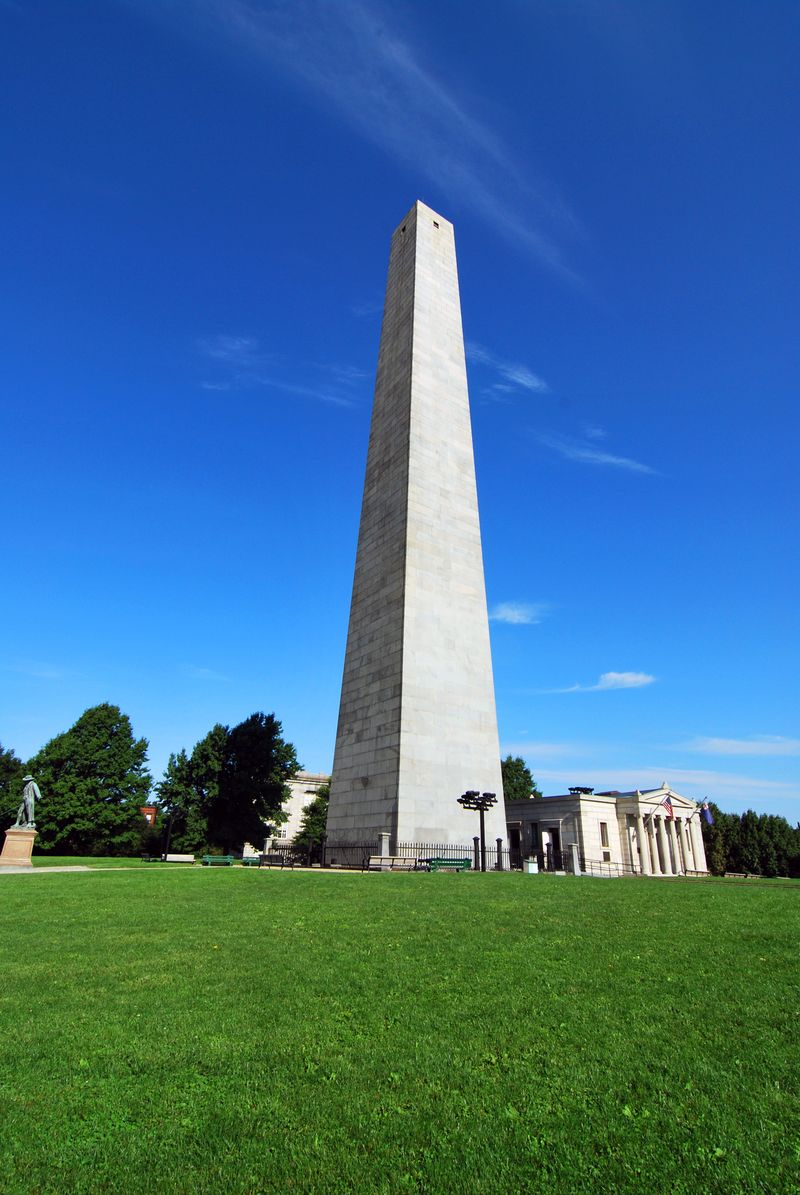
Rising 221 feet above the Charlestown landscape, the Bunker Hill Monument commemorates a pivotal Revolutionary War battle. Located in Boston, Massachusetts, it marks the site where colonial forces stood against the British in 1775.
Climb its 294 steps to enjoy panoramic views of the city. The nearby museum offers rich insights into the battle’s significance and the American fight for independence.
Did you know? The famous order “Don’t fire until you see the whites of their eyes” was reportedly given during this battle, underscoring its intensity.
13. The Old North Church

Paul Revere’s famous midnight ride began at the Old North Church, a beacon of freedom in Boston, Massachusetts. Founded in 1723, it is the city’s oldest standing church and a symbol of the American Revolution.
Visitors can explore the church’s storied architecture and its role in the signal lantern event of April 18, 1775. The crypt below offers a glimpse into colonial burial practices.
Fun fact: The church’s steeple was the tallest structure in Boston when it was first built, making it a perfect lookout point.
14. Fort McHenry National Monument
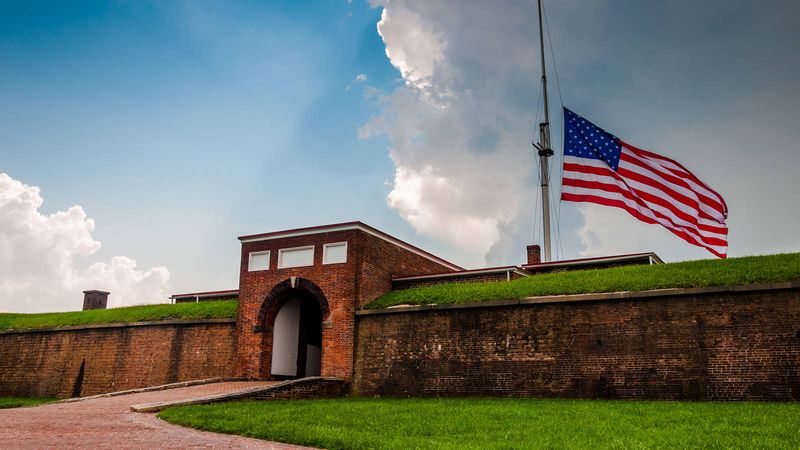
Fort McHenry’s defense during the War of 1812 inspired Francis Scott Key to pen “The Star-Spangled Banner.” Located in Baltimore, Maryland, the fort is a testament to American resilience.
Visitors can explore the barracks, ramparts, and exhibits telling the story of the battle that safeguarded the city. The fort’s grounds present a perfect spot for reflection and picnics.
Did you know? The original “Star-Spangled Banner” flag had 15 stars and 15 stripes, representing the states in the Union at the time.
15. Harpers Ferry National Historical Park

Nestled at the confluence of the Potomac and Shenandoah Rivers, Harpers Ferry is a tapestry of history and natural beauty. This West Virginia town played a pivotal role during the Civil War and the abolitionist movement.
Visitors can explore restored 19th-century buildings, museums, and John Brown’s Fort, the site of his famous raid. Trails offer stunning views and insights into the town’s strategic significance.
Fun fact: Harpers Ferry was an industrial hub, housing one of the first U.S. armories, which John Brown targeted in his 1859 raid.
16. Antietam National Battlefield
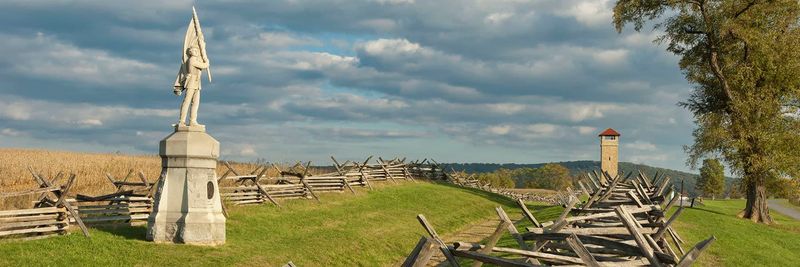
Antietam remains one of the most hallowed grounds in American history. Located in Sharpsburg, Maryland, it was the site of the bloodiest single-day battle in the Civil War.
Visitors can walk the fields and explore the Antietam National Cemetery. The visitor center offers exhibits detailing the battle’s strategic maneuvers and impact.
Did you know? The Battle of Antietam led to President Abraham Lincoln issuing the preliminary Emancipation Proclamation, changing the war’s moral and political stakes.
17. Manassas National Battlefield Park

Manassas, or Bull Run, witnessed two major battles that shaped the Civil War’s early years. Located in Virginia, this site is steeped in military history and strategic importance.
Explore the preserved landscape on a self-guided tour, visiting iconic locations like the Stone House and Henry Hill. The museum offers detailed exhibits on the battles and their significance.
Did you know? The First Battle of Manassas shattered the myth of a short war, highlighting the conflict’s potential length and intensity.
18. Mount Vernon
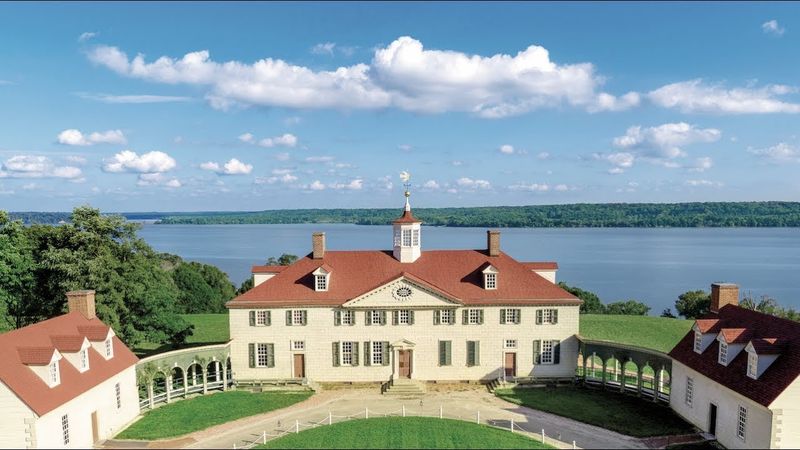
Home to George Washington, Mount Vernon stands as a testament to his legacy and leadership. Located in Fairfax County, Virginia, this plantation offers a glimpse into 18th-century life.
Explore the elegant mansion, lush gardens, and functional farm. The museum and education center provide insights into Washington’s presidency and personal life.
Did you know? George Washington was an avid agriculturist, implementing innovative farming techniques that were ahead of his time.
19. The Hermitage
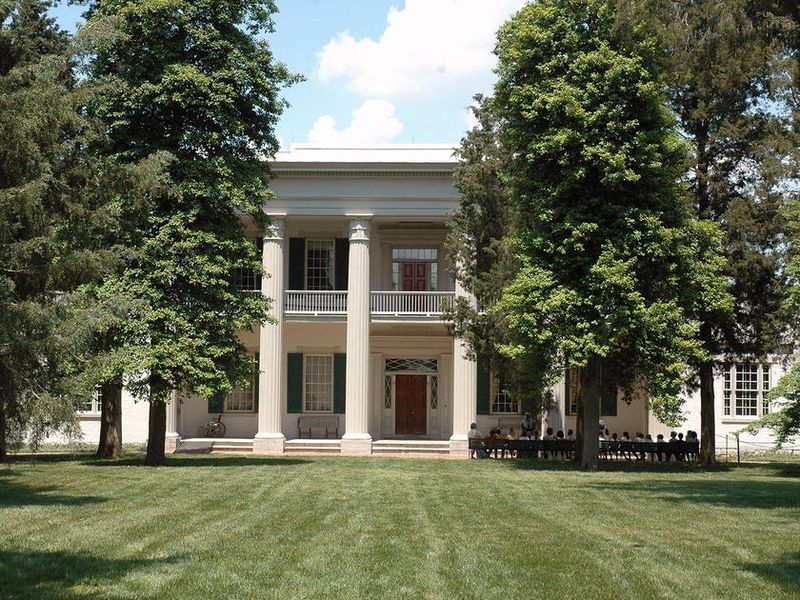
The Hermitage, home to President Andrew Jackson, invites visitors to explore early 19th-century Southern life. Located near Nashville, Tennessee, it reflects Jackson’s complex legacy.
Tour the opulent mansion and sprawling grounds, including slave quarters and gardens. The museum provides a nuanced look at Jackson’s political and personal life.
Fun fact: The Hermitage was originally a two-story log cabin, expanded into the grand mansion you see today, symbolizing Jackson’s rise to prominence.
20. Vicksburg National Military Park
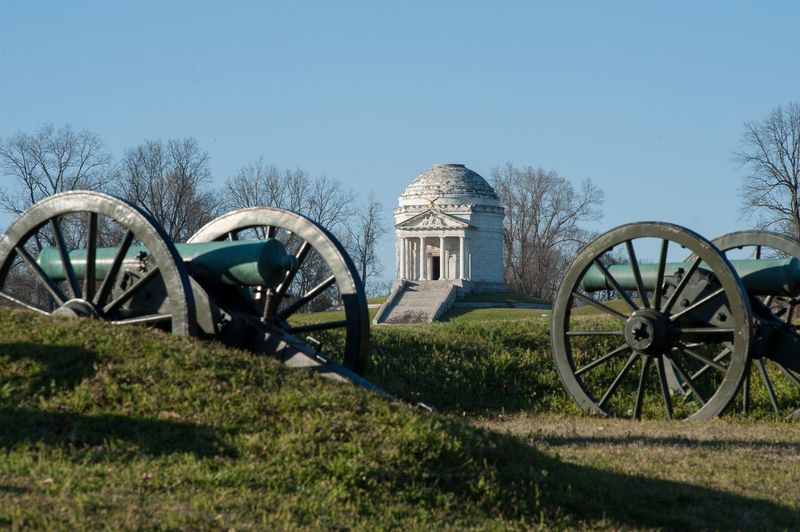
Vicksburg was a turning point in the Civil War, granting the Union control over the Mississippi River. Situated in Mississippi, the park preserves this pivotal battlefield.
Drive through the park’s tour road, discovering monuments and preserved trenches. The visitor center offers exhibits on the siege’s tactics and significance.
Did you know? The surrender of Vicksburg on July 4, 1863, was pivotal, leading to that date being called “Vicksburg’s Independence Day,” celebrated only after World War II.
21. Chickamauga and Chattanooga National Military Park
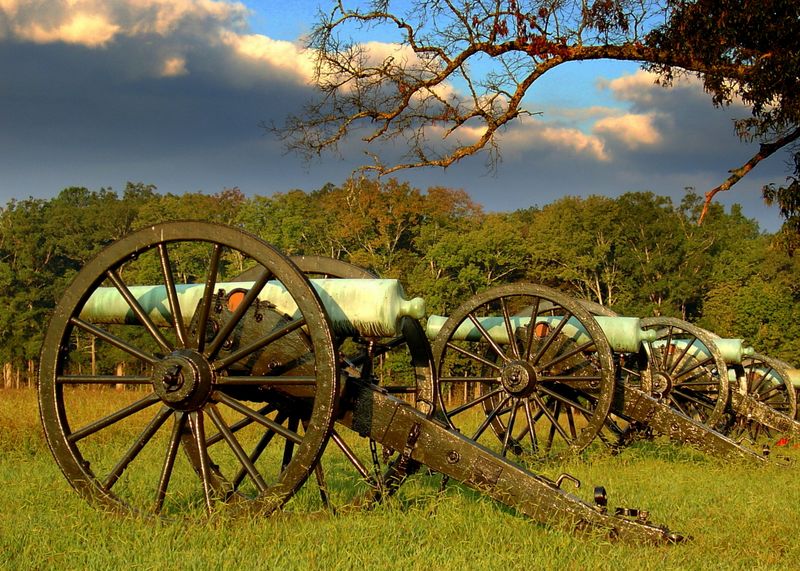
The battles of Chickamauga and Chattanooga marked significant moments in the Civil War. Located on the Tennessee-Georgia border, this park is a testament to strategic military engagements.
Explore the wooded trails and monuments that dot the landscape. The visitor centers offer detailed exhibits and maps of troop movements.
Did you know? The Battle of Chickamauga was the second-deadliest battle of the Civil War, only surpassed by Gettysburg in its toll.
22. Little Bighorn Battlefield National Monument
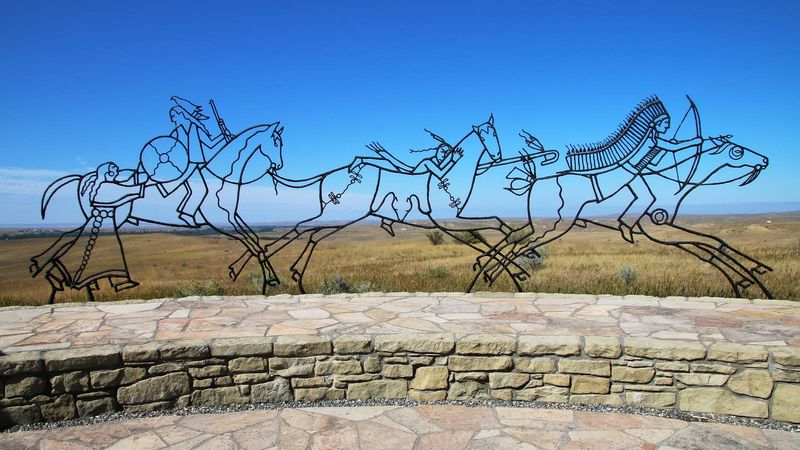
At Little Bighorn, the famous “Custer’s Last Stand” unfolded, a dramatic clash between the U.S. Cavalry and Native American tribes. Situated in Montana, it remains a symbol of resistance and cultural conflict.
Visitors can follow the walking tours and visit memorials honoring the Native warriors and soldiers. The visitor center provides comprehensive insights into the battle’s context and consequences.
Did you know? The battle was part of the Great Sioux War of 1876, a series of conflicts between the U.S. government and native tribes defending their land.
23. Fort Necessity National Battlefield
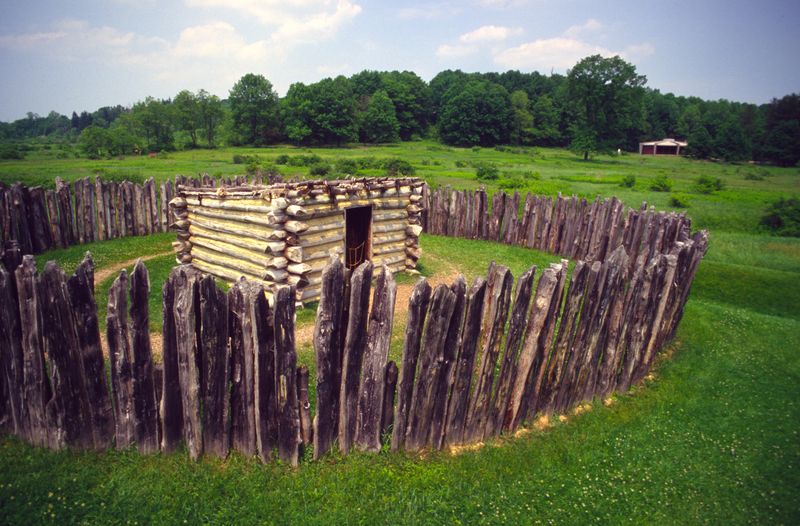
Fort Necessity is where young George Washington faced his first military defeat, setting the stage for future leadership. Located in Pennsylvania, it marks the beginning of the French and Indian War.
Explore the reconstructed fort and visitor center, which offer insights into 18th-century warfare. The surrounding meadow and woods provide a tranquil setting for reflection.
Did you know? The battle at Fort Necessity was the first major engagement of the French and Indian War, ultimately leading to global repercussions.
24. Petersburg National Battlefield
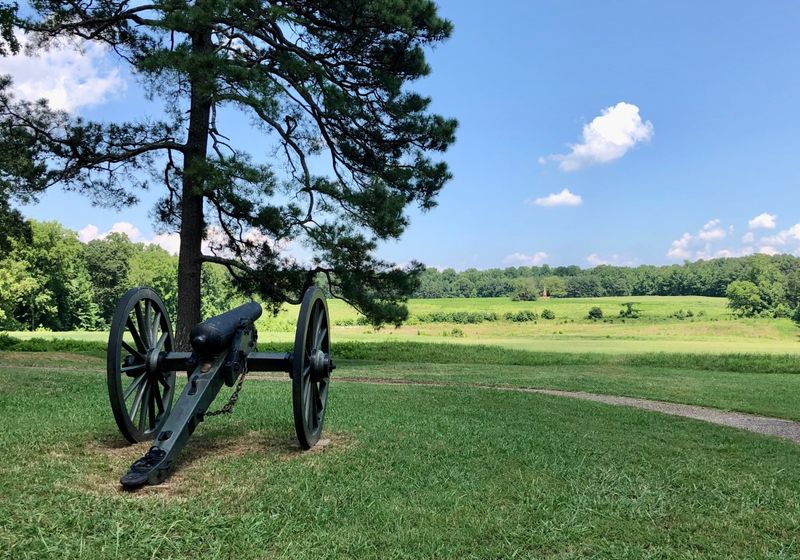
Petersburg saw the longest siege in American warfare, pivotal to the Civil War’s final phase. Located in Virginia, it highlights the war of attrition that broke the Confederacy’s back.
Explore the extensive trench works and battle sites across the park. Visitor centers offer maps and narratives of the siege’s 292 days.
Did you know? The Battle of the Crater, part of the Siege of Petersburg, involved a massive explosion intended to breach Confederate lines, though it ultimately failed.
25. Yorktown Battlefield
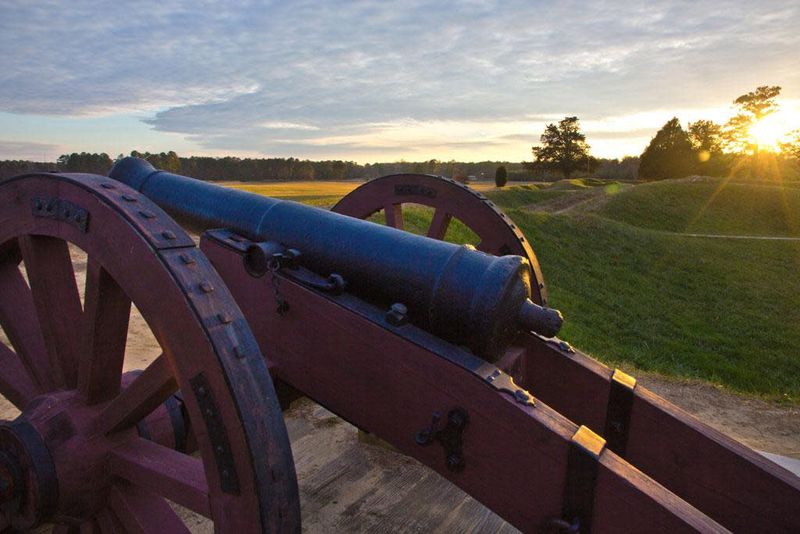
Yorktown marks the final major battle of the American Revolution, where British forces surrendered to George Washington. Located in Virginia, it’s a symbol of American perseverance and victory.
Walk the historical trails and visit the site where the British laid down their arms. The visitor center offers exhibits on the battle’s strategies and significance.
Did you know? The victory at Yorktown was aided by French troops and naval forces, showcasing international alliances that secured American independence.
26. San Juan Island National Historical Park
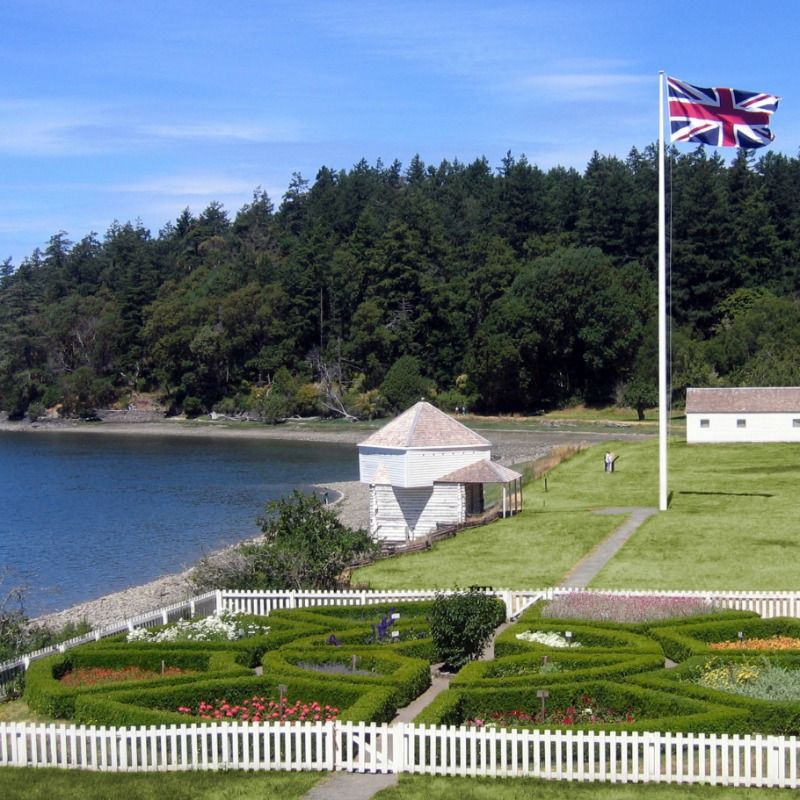
San Juan Island was the site of the peaceful “Pig War” standoff between the U.S. and Britain, a quirky chapter in history. Located in Washington, it represents diplomacy over conflict.
Explore the island’s lush landscapes and historical sites, including English and American camps. The visitor center offers details on this 19th-century territorial dispute.
Fun fact: The “war” was sparked by the shooting of a pig, yet it ended without a single human casualty, highlighting the power of negotiation.
27. Golden Spike National Historical Park
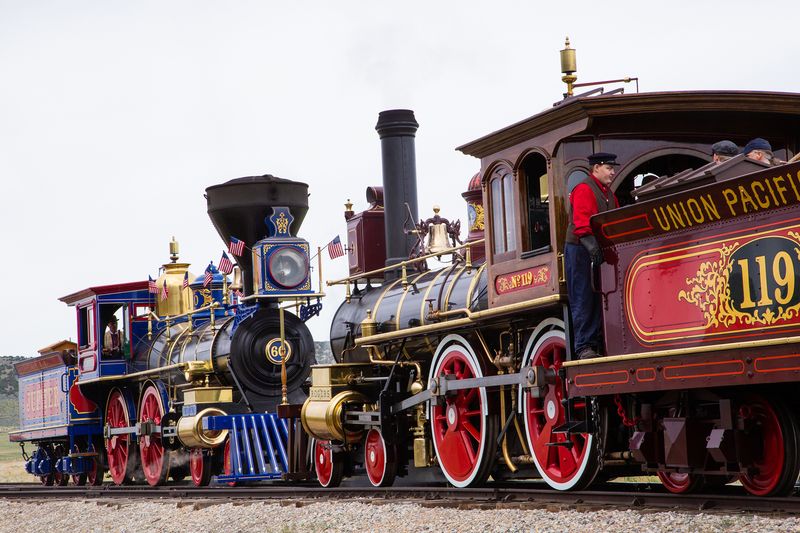
Golden Spike marks the completion of the First Transcontinental Railroad, a marvel of engineering and ambition. Located in Promontory, Utah, it’s where east met west in 1869.
Visit the site of the iconic “Last Spike” ceremony, with replicas of the original locomotives. The visitor center offers exhibits on the railroad’s construction and impact.
Did you know? The joining of the railroads reduced cross-country travel time from months to mere days, revolutionizing transportation and commerce.
28. Pearl Harbor National Memorial
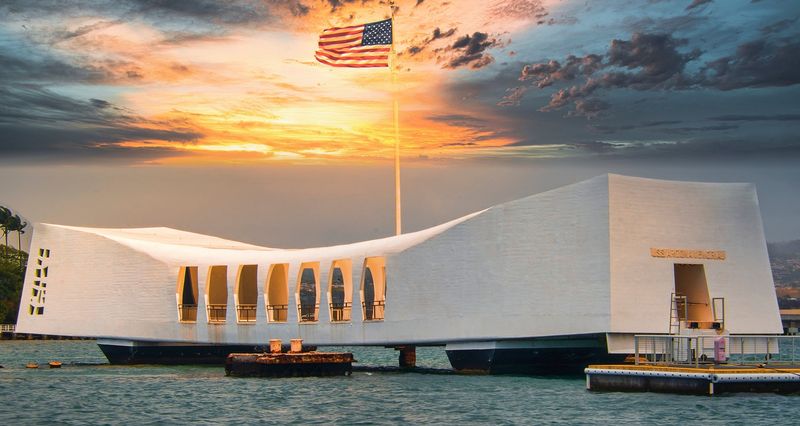
Pearl Harbor, a moment that stirred a nation, witnessed the attack that plunged the U.S. into World War II. Located in Hawaii, it honors those who perished on December 7, 1941.
Visitors can tour the USS Arizona Memorial, the Battleship Missouri, and various museums detailing the attack’s events and aftermath. The serene setting belies its tumultuous past.
Did you know? The attack on Pearl Harbor led President Roosevelt to famously proclaim it “a date which will live in infamy,” uniting the nation in its war effort.
29. Cabrillo National Monument
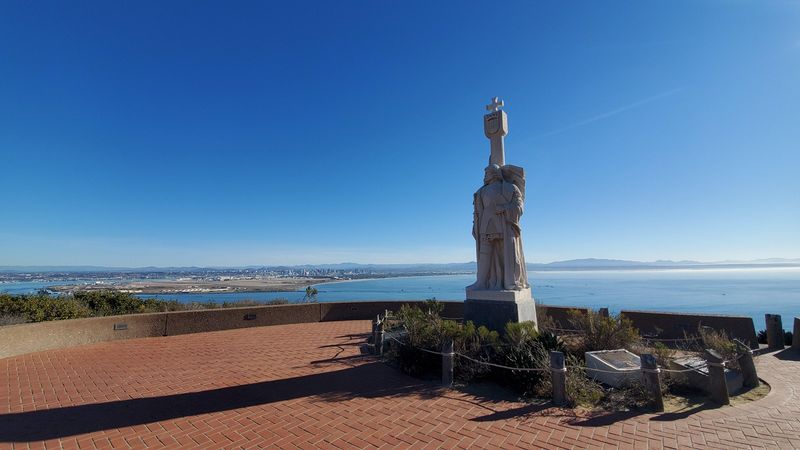
Cabrillo National Monument commemorates the first European expedition to what is now the West Coast of the U.S. Located in San Diego, California, it offers panoramic vistas and rich history.
Explore the monument, lighthouse, and tide pools teeming with marine life. The visitor center offers insights into Cabrillo’s voyage and the region’s exploration.
Did you know? Juan Rodríguez Cabrillo was a Portuguese explorer sailing under the Spanish flag, marking a blend of European influences in early American history.
30. Lassen Volcanic National Park
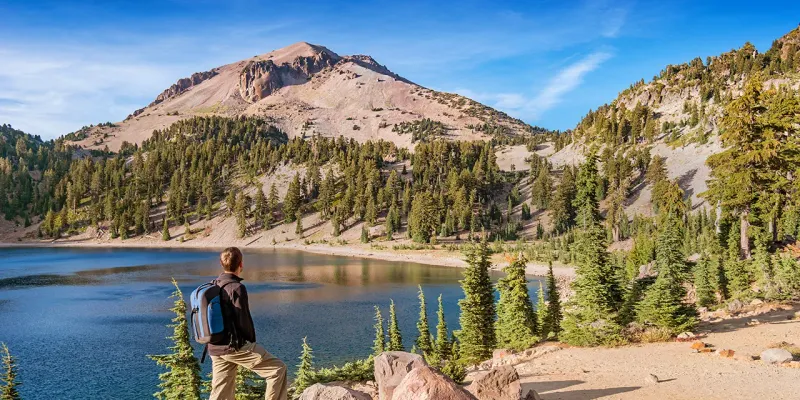
Lassen Volcanic National Park showcases the dramatic power of nature with its geothermal wonders. Located in Northern California, it’s a testament to the dynamic forces shaping the earth.
Visitors can explore bubbling mud pots, fumaroles, and the majestic Lassen Peak. The park offers trails and insights into volcanic activity.
Did you know? Lassen Peak’s 1914 eruption was one of the few volcanic eruptions in the contiguous United States in the 20th century, showcasing nature’s unpredictable might.
31. Mission San Juan Capistrano
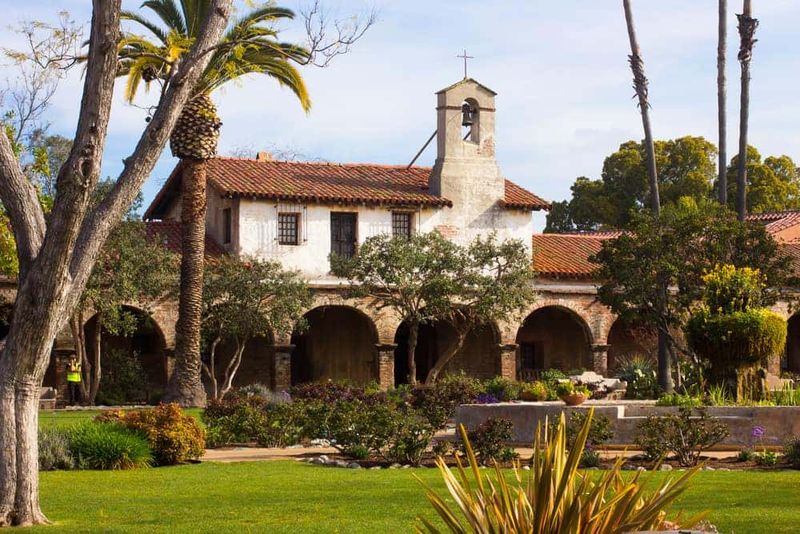
Mission San Juan Capistrano is a jewel of Spanish history in California, known for the “Return of the Swallows.” Located in Orange County, it’s a symbol of the mission era’s cultural blend.
Visitors can explore the elegant Serra Chapel, lush gardens, and museum artifacts. The annual return of the swallows marks a unique natural phenomenon.
Fun fact: The mission was founded in 1776, the same year as American independence, marking a year of significant beginnings on both coasts.
32. Joshua Tree National Park
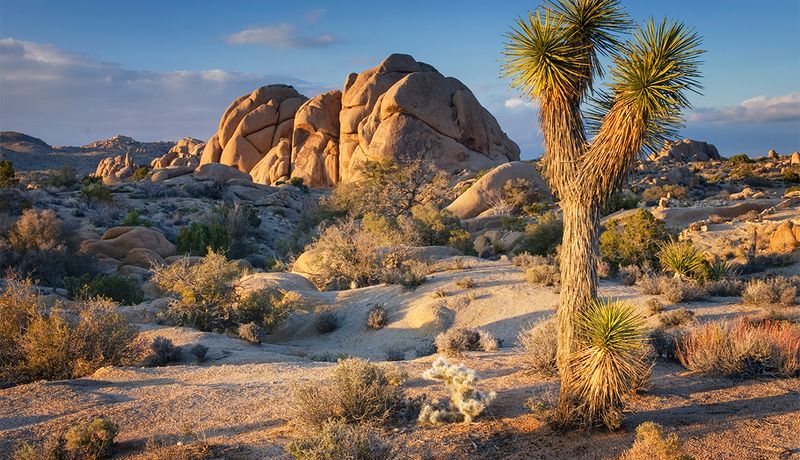
Joshua Tree National Park melds two distinct desert ecosystems, offering a unique blend of natural beauty and cultural history. Located in Southern California, it’s a haven for adventurers and historians alike.
Explore the park’s rugged landscapes, historical mining sites, and Native American history. The visitor center provides insights into the area’s diverse ecology and human impact.
Did you know? The park is named for the Joshua tree, a species native to the Mojave Desert, whose twisted, spiky appearance inspired Mormon settlers to name it after the biblical figure.
33. Rosie the Riveter WWII Home Front National Historical Park
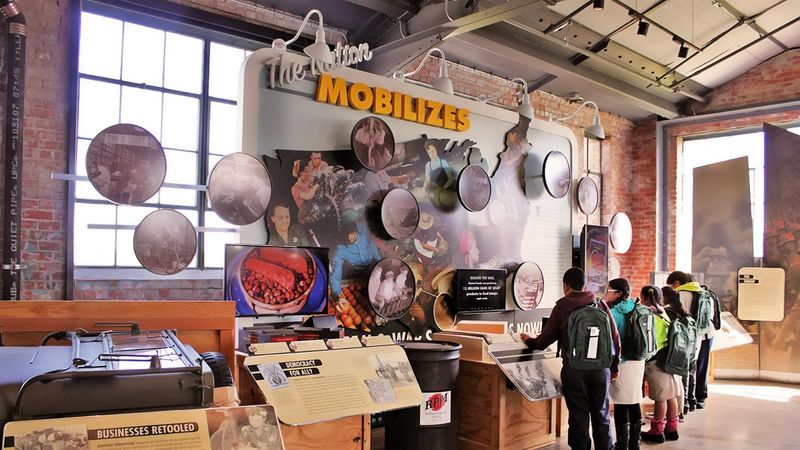
Rosie the Riveter Park celebrates the women who powered America’s home front during WWII. Located in Richmond, California, it honors their contributions to the war effort.
Visitors can explore historical sites and exhibits on wartime production and social changes. The park highlights the role of women and minorities in shaping modern America.
Did you know? Rosie the Riveter became a cultural icon, symbolizing female empowerment and the shift in women’s roles during the 1940s.
34. The Presidio of San Francisco

The Presidio, a former military post, offers a rich narrative of San Francisco’s history. Overlooking the Golden Gate Bridge, it’s a blend of natural beauty and historical legacy.
Explore its trails, museums, and historic buildings that tell the story of its military past. The park’s scenic vistas provide a peaceful retreat within the bustling city.
Fun fact: The Presidio was established by Spain in 1776, later serving the Mexican and U.S. armies, reflecting its strategic importance across eras.
35. Pu’uhonua o Hōnaunau National Historical Park
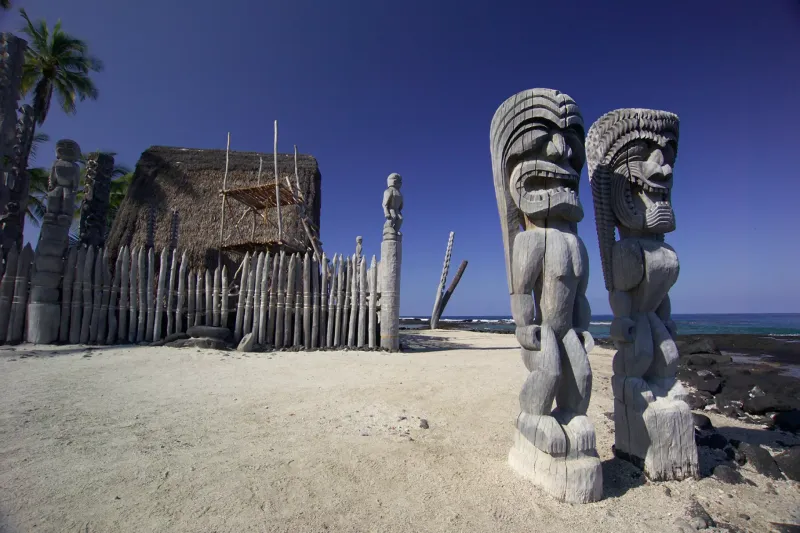
Pu’uhonua o Hōnaunau is a sacred Hawaiian site offering a glimpse into traditional island culture. Located on the Big Island, it served as a place of refuge and sanctuary.
Visitors can explore the royal grounds, heiau (temples), and learn about Hawaiian beliefs and practices. The park’s serene setting is perfect for contemplation and learning.
Did you know? Pu’uhonua o Hōnaunau was a place where defeated warriors and lawbreakers could seek forgiveness and safety, highlighting the island’s unique justice system.
36. Sitka National Historical Park
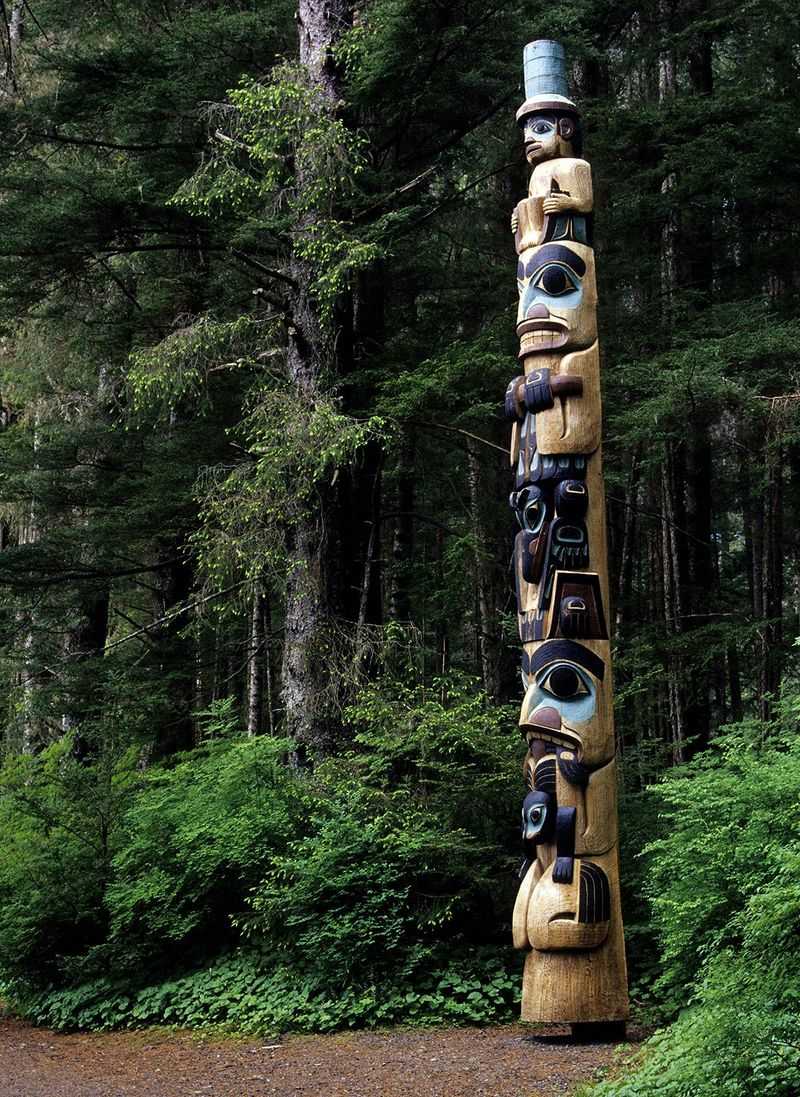
Sitka National Historical Park preserves the rich cultural tapestry of Alaska’s native and Russian colonial history. Located in Sitka, it’s a haven of natural beauty and heritage.
Explore the trails adorned with Tlingit totem poles, and visit the Russian Bishop’s House. The visitor center offers exhibits on the site’s complex history.
Did you know? The park commemorates the 1804 Battle of Sitka, a pivotal conflict between Tlingit people and Russian settlers, shaping Alaska’s future.
37. Custer Battlefield Museum
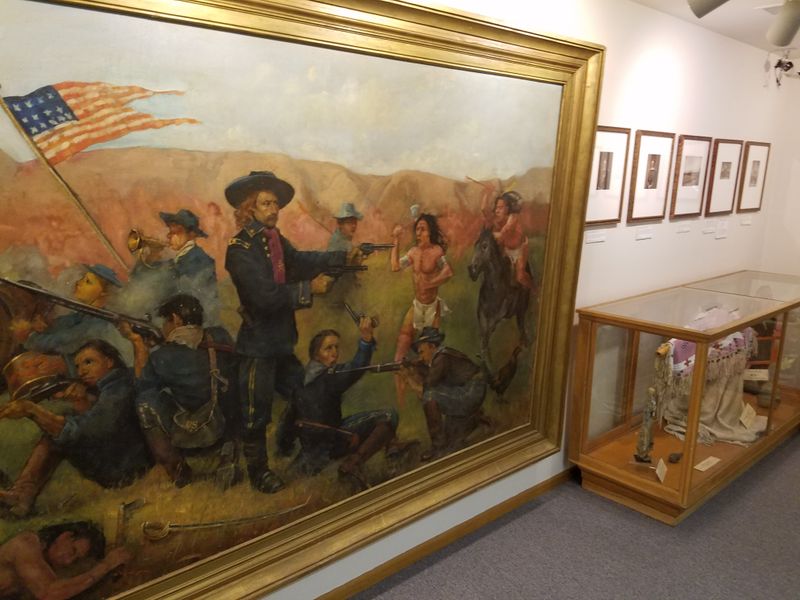
The Custer Battlefield Museum offers an immersive experience into the Battle of Little Bighorn. Located in Garryowen, Montana, it highlights this iconic encounter that shaped the West.
Visitors can explore detailed exhibits on the battle’s events and key figures, such as Custer and Sitting Bull. The museum’s artifacts bring history vividly to life.
Did you know? The museum stands on the only privately owned land where the Battle of Little Bighorn was fought, marking a unique link to history.
38. Old Fort Niagara
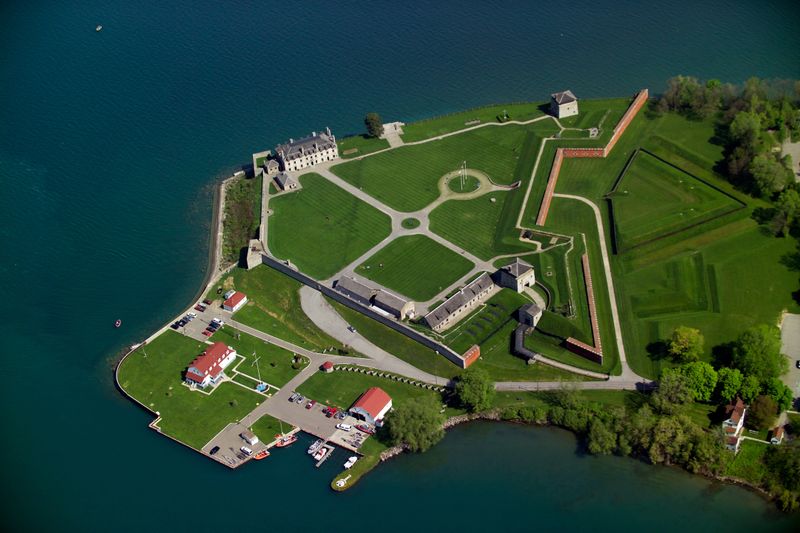
Old Fort Niagara stands as a testament to centuries of military history, located at the mouth of the Niagara River in New York. Its strategic location made it a key player in colonial wars.
Explore the fort’s stone structures, exhibits, and reenactments that bring history to life. The views of Lake Ontario add to the fort’s impressive presence.
Did you know? During the War of 1812, Old Fort Niagara was captured by the British, only to be returned to the United States after the war, showcasing its enduring significance.
39. Fort Laramie National Historic Site
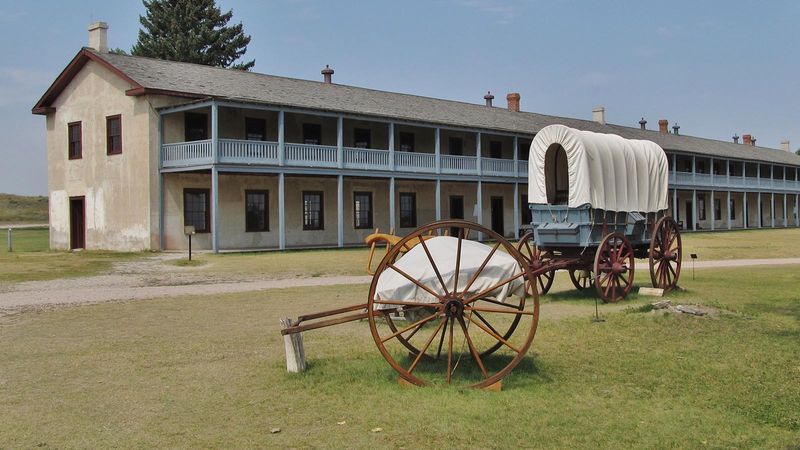
Fort Laramie served as a vital military and trading post during the westward expansion. Located in Wyoming, it’s a window into frontier life and diplomacy with native tribes.
Visitors can explore restored buildings and learn about daily life on the frontier. The site’s museum offers insights into its role in shaping the American West.
Did you know? Fort Laramie was a key stop on the Oregon Trail, reflecting the westward migration’s challenges and hopes.
40. Alcatraz Island
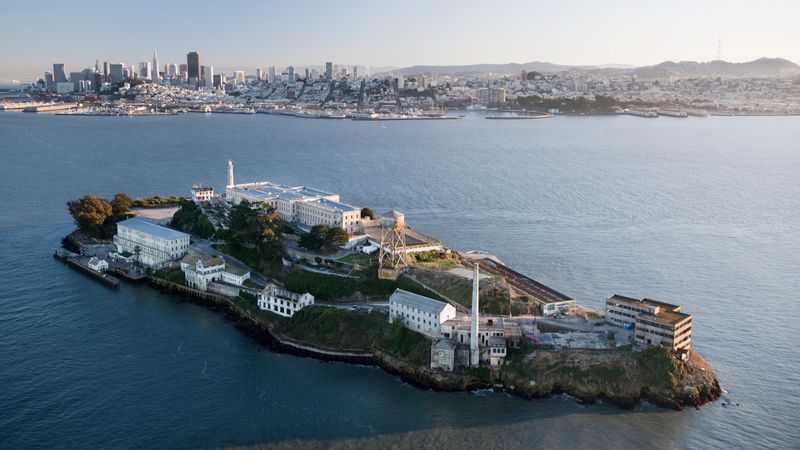
Alcatraz Island, once a formidable federal prison, is now a fascinating historical site. Located in San Francisco Bay, it housed notorious criminals and offers stories of escape and intrigue.
Visitors can explore the prison’s cells and learn about its infamous inmates. The island’s history as a military fort and native protest site adds layers to its narrative.
Did you know? Alcatraz’s most famous escape attempt in 1962 remains a mystery, fueling legends and speculation about the island’s past.
41. Angel Island Immigration Station
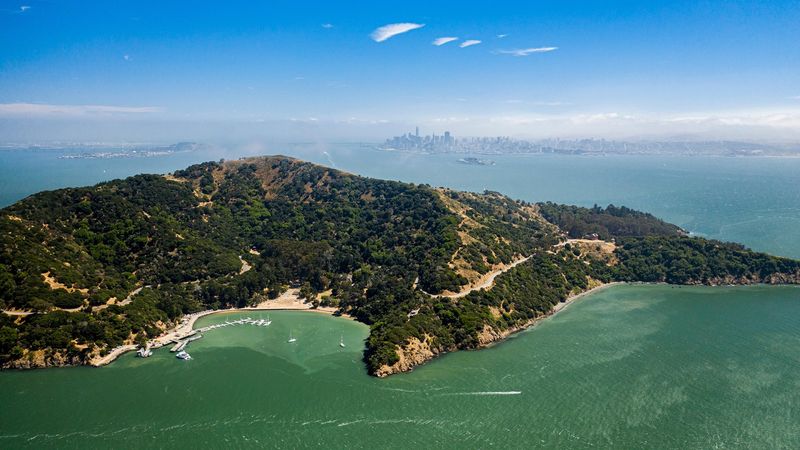
Angel Island is often called the “Ellis Island of the West,” a portal for immigrants entering the U.S. Located in San Francisco Bay, it stands as a testament to diverse cultural legacies.
Visitors can explore the restored immigration station buildings and learn about the immigrant experience. The surrounding park offers hiking trails and stunning bay views.
Did you know? Between 1910 and 1940, Angel Island processed hundreds of thousands of immigrants, with poetry etched into its walls by those detained, offering poignant insights.
42. Fort Vancouver National Historic Site

Fort Vancouver was a vital trading hub and military outpost in the Pacific Northwest. Located in Washington, it reflects the region’s rich fur trade history.
Visitors can explore reconstructed buildings and engage with interpreters portraying historical figures. The site’s museum offers insights into the fort’s economic and cultural impact.
Did you know? Fort Vancouver was the headquarters of the Hudson’s Bay Company’s Columbia Department, highlighting its influence over the region’s commerce.
43. The Dalles

The Dalles is a gateway to the rich history of the Oregon Trail. Nestled along the Columbia River in Oregon, it was a vital stop for settlers heading west.
Explore the town’s museums and historical landmarks that tell the story of settlement and river trade. The scenic vistas offer a glimpse into the challenges and triumphs faced by pioneers.
Did you know? The Dalles was known as the “End of the Oregon Trail,” where pioneers could finally navigate the river by boat, marking a significant journey milestone.
44. Pioneer Courthouse
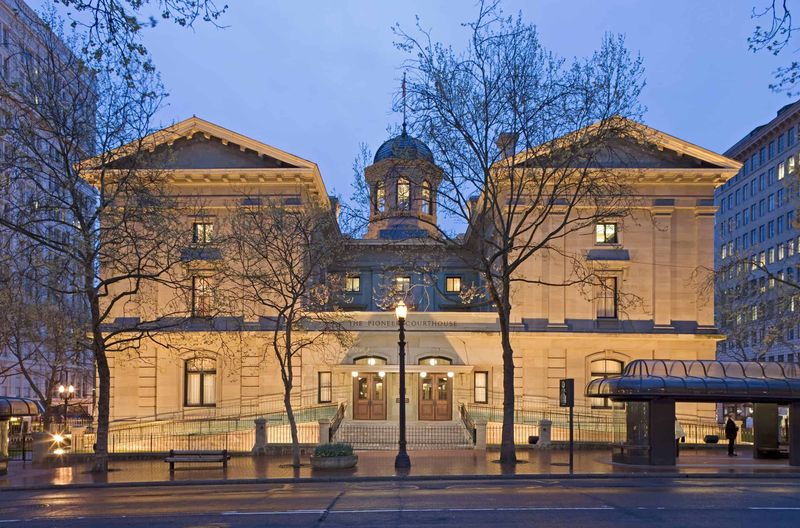
Pioneer Courthouse is an architectural gem in Portland, Oregon. As one of the oldest federal buildings in the Pacific Northwest, it has witnessed significant legal and political events.
Visitors can tour the courthouse, exploring its historic courtrooms and artifacts. The building’s neoclassical design stands out amid the city’s modern skyline.
Did you know? Pioneer Courthouse once housed the U.S. District Court for Oregon, playing a crucial role in legal history, including notable early environmental law cases.
45. Boston Tea Party Ships and Museum
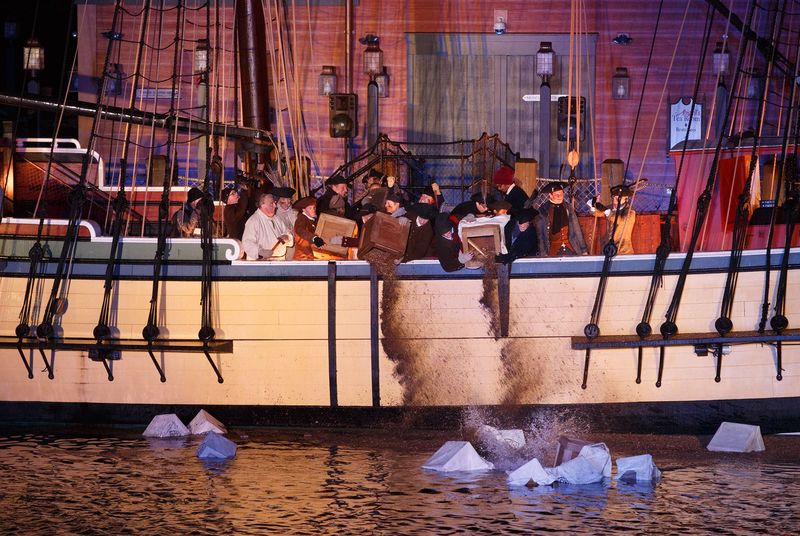
Step aboard and relive the pivotal moment that ignited the American Revolution. The Boston Tea Party Ships and Museum offers an immersive journey back to December 16, 1773. Costumed actors, interactive exhibits, and authentically restored ships create an engaging historical experience.
Visitors can participate in reenactments, throwing ‘tea crates’ overboard. The museum’s impressive collection of artifacts, including one of two remaining tea chests, captivates guests.
This educational attraction not only entertains but also provides insight into colonial resistance. A visit here vividly illustrates the audacity and determination of early American patriots.
46. The Liberty Bell Center
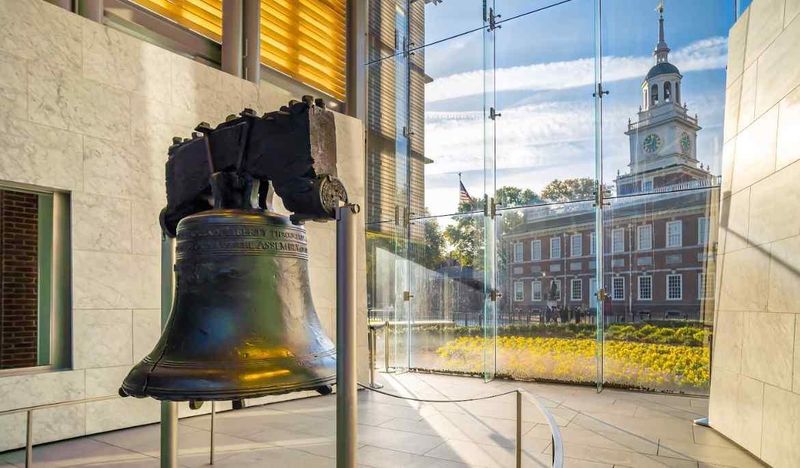
A symbol of freedom and justice, the Liberty Bell is an American icon. Housed in the Liberty Bell Center in Philadelphia, the bell is famous for its distinctive crack and historical importance.
The center offers exhibits highlighting its significance, alongside video presentations and historical documents. Visitors experience the power of this enduring emblem firsthand.
The bell, originally used to call lawmakers to sessions, has inspired generations in the struggle for liberty. Its inscription, “Proclaim Liberty Throughout All the Land,” resonates with those who value freedom and equality.
47. Haleakalā National Park

On the island of Maui, Haleakalā National Park offers a journey through stark volcanic landscapes and lush subtropical rainforests. The park encompasses the dormant Haleakalā Volcano and features diverse ecosystems.
Visiting the summit for sunrise is a cherished experience, as colors illuminate the landscape in breathtaking fashion. Trails for hiking and opportunities to learn about native Hawaiian culture add to the park’s allure.
Haleakalā, meaning “House of the Sun,” is rich with legends and natural beauty, providing a unique journey into Hawaii’s geological and cultural history.
48. Mesa Verde National Park
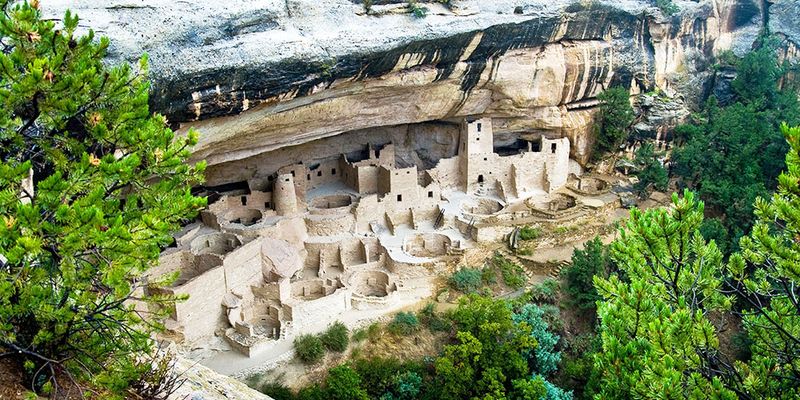
In the high desert of Colorado, Mesa Verde National Park preserves the ancient legacy of the Ancestral Puebloans. The park’s cliff dwellings, built into sandstone alcoves, tell stories of a civilization that flourished for centuries.
Visitors explore these archaeological sites, marveling at the architectural ingenuity and cultural richness. Guided tours offer deeper insight into the lives of the people who once called this land home.
Mesa Verde invites admiration for its historical significance and the mystery surrounding the Ancestral Puebloans’ sudden departure. A visit here is a step back in time.
49. Charleston’s Historic District

Wander through Charleston’s Historic District, where cobblestone streets and antebellum architecture evoke a bygone era. This South Carolina gem is a living museum, reflecting the rich history and cultural evolution of the Southern United States.
The district’s colorful houses, notable landmarks, and hidden gardens offer a picturesque setting. Guided tours provide fascinating insights into Charleston’s storied past, from its role in the American Revolution to its impact on the Civil War.
Visitors experience the charm and resilience that have defined Charleston through centuries of change, making it a must-visit for history lovers.
50. Chaco Culture National Historical Park
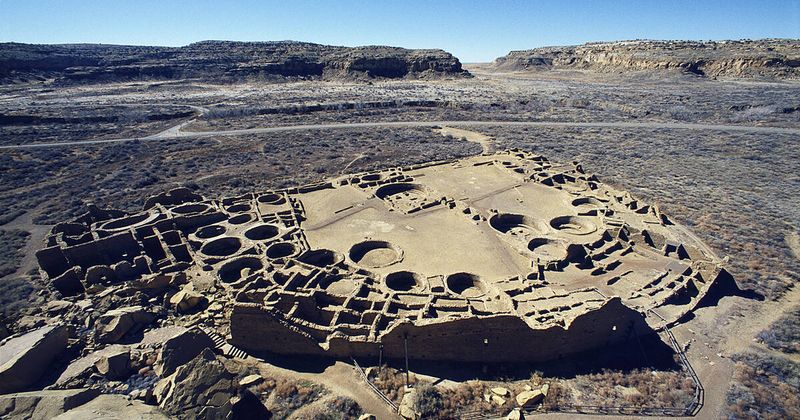
In the remote deserts of New Mexico, Chaco Culture National Historical Park holds secrets of an ancient civilization. The park preserves massive stone ruins that were once the epicenter of Puebloan culture.
These architectural marvels, aligned with celestial events, showcase the ingenuity and spiritual depth of the Chacoan people. Exploring the park offers a unique connection to this cultural heritage.
Chaco’s mysterious allure lies not only in its structures but also in its influence across the region. Visitors witness a captivating blend of history, archaeology, and astronomy at this UNESCO World Heritage Site.

